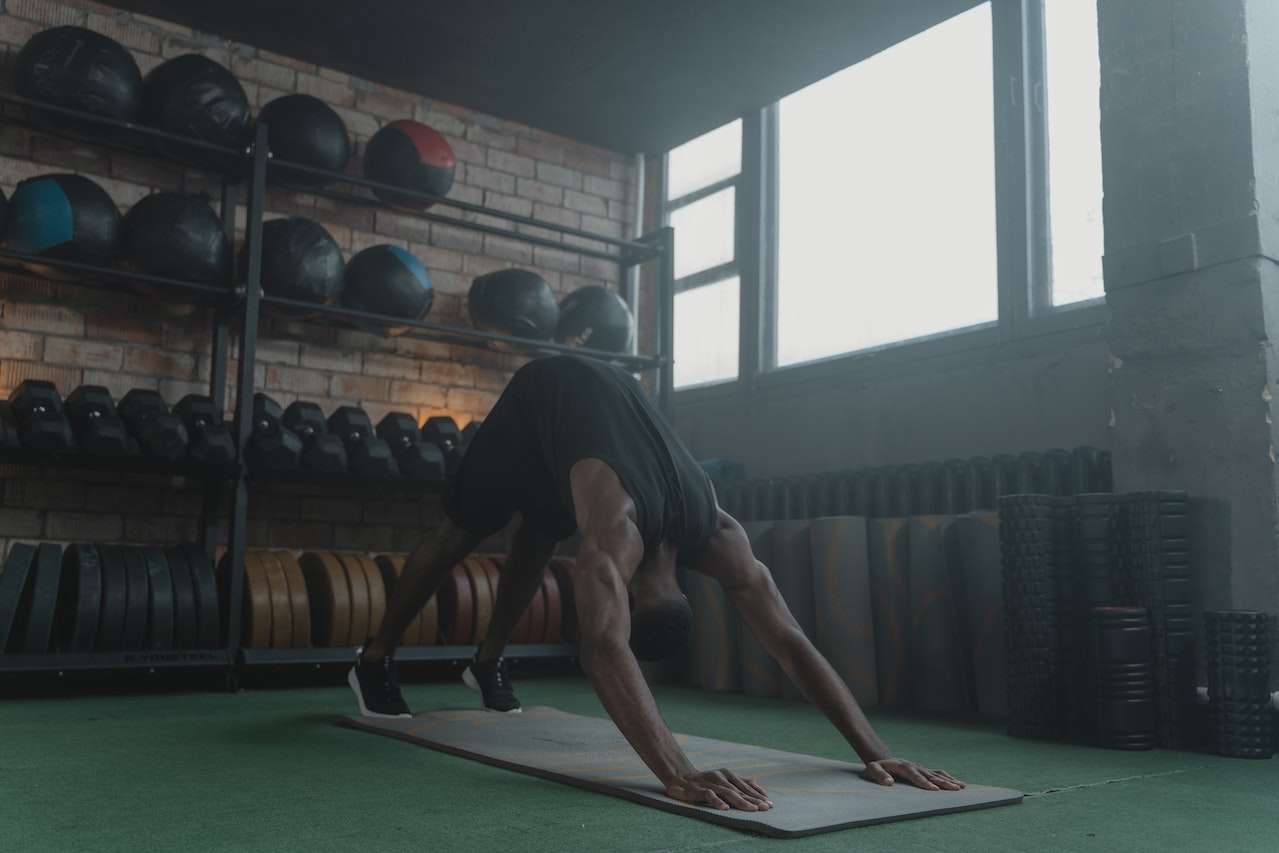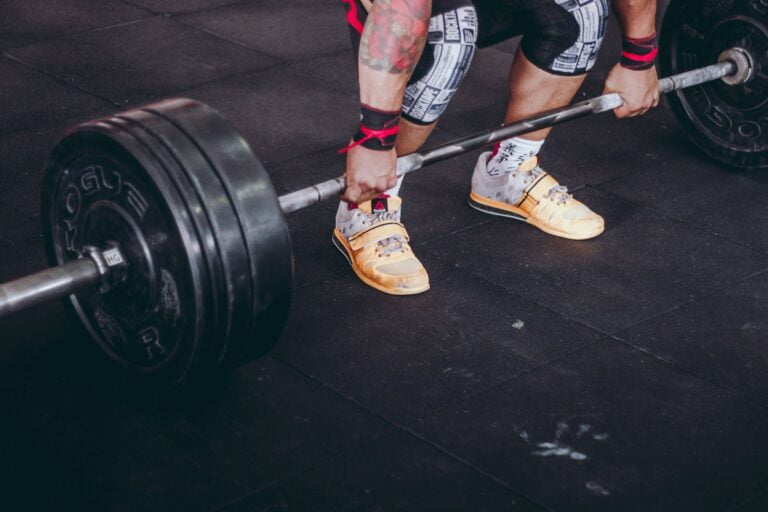Pike Push-Up: Benefits, Technique, and Variations

The pike push-up is a great option in the field of bodyweight exercises for individuals looking to increase upper body strength and shoulder definition. This exercise is an original variation of the traditional push-up, targeting specific muscle areas with precise movements. In this comprehensive article, We explore the mechanics, benefits, correct execution, alternative exercises, progression strategies, and advanced variations, including the elevated pike push-up.
Understanding the Pike Push-Up
The pike push-up is more than just a variation; it’s a strategic twist on the classic push-up that engages muscles differently, leading to a well-rounded upper body workout. While the standard push-up primarily engages the chest, triceps, and shoulders, the pike push-up prioritizes the anterior deltoids while incorporating the triceps and upper chest. The hallmark of this exercise lies in the distinctive body position—a downward dog-like stance—resulting in an inverted “V” shape that strengthens the shoulder engagement. Pike push-ups are the first level in the progression of handstand push-ups.
Pike pushups Muscles Worked
- Deltoids: The anterior deltoids, situated at the front of the shoulders, take the spotlight during pike push-ups, promoting shoulder strength and stability.
- Triceps: The triceps, responsible for extending the elbow joint, plays a pivotal role in maintaining proper form and control.
- Upper Chest: While not as dominant as in traditional push-ups, the upper pectoral muscles come into play during the downward phase of the movement.
- Core: Core engagement is essential to stabilize the body in the inverted position, fostering balance and control.
Benefits of Pike Push-Ups
- Upper Body Strength: Pike push-ups place significant stress on the shoulders, triceps, and chest muscles. As you push your body up and down, the shoulders act as the primary movers, contributing to improved muscle strength and endurance.
- Shoulder Focus: Unlike traditional push-ups, the pike variation places your body in an inverted V shape, intensifying the engagement of the deltoid muscles. This unique angle effectively targets the anterior, lateral, and posterior deltoids, contributing to well-rounded shoulder development.
- Core Engagement and Stability: Elevating your hips creates a challenge for your core muscles as they work to maintain stability throughout the movement. This engages the rectus abdominis (abs), obliques, and lower back muscles, fostering improved core strength and overall balance.
- Minimal Equipment Required: One of the great aspects of pike push-ups is their simplicity. You can perform them virtually anywhere without any specialized equipment. This accessibility makes them a great option for home workouts, travel routines, or when you want to switch up your gym routine.
Proper Technique
- Starting Position: Start in a plank position with your hands slightly wider than shoulder-width apart and your feet together. Lift your hips up, forming an inverted V shape with your body.
- Hand Placement and Alignment: Your hands should be positioned firmly on the ground, fingers spread wide for stability. Ensure your wrists are aligned with your shoulders to maintain proper joint alignment.
- Execution of the Push-Up: Lower your head between your hands while maintaining a straight line from your hips to your heels. Keep your elbows close to your body as you descend. Push back up to the starting position by extending your elbows.
- Breathing and Rhythm: Inhale as you lower your body, and exhale as you push back up. Maintain a controlled rhythm to prevent straining your muscles.
- Common Mistakes: Avoid arching your back or rounding your shoulders, as this can lead to improper form and potential strain. Additionally, ensure your hips remain elevated to target the shoulders effectively.
Pike Push-Up Alternatives: Progression and Advanced Variations
1. Incline Pike Push-Ups:
Just like regular incline push-ups incline pike pushups are for beginners, performing pike push-ups with your hands elevated on an elevated surface (like a bench or step) can reduce the load and help you build strength gradually.
2. Decline Pike Push-Ups:
As you gain confidence and strength, try placing your feet on an elevated surface while keeping your hands on the ground. This increases the load on your shoulders.
3. Feet-Elevated Pike Push-Ups:
Elevate both your hands and feet on separate elevated surfaces to intensify the exercise further. This is suitable for intermediate practitioners.
4. Straddle Pike Push-Ups:
For advanced individuals, spreading your legs wide apart creates additional instability, requiring greater shoulder and core strength to execute the movement.
5. One-Arm Pike Push-Ups:
This advanced variation involves shifting your weight to one arm while the other arm remains extended. It demands exceptional shoulder strength and stability.
Precautions and Injury Prevention
- Warm-Up: Prioritize a thorough warm-up to prepare your muscles and joints for the demands of the exercise.
- Listen to Your Body: Progress gradually and avoid overexertion. If you experience discomfort or pain, stop immediately.
- Shoulder and Wrist Issues: If you have a history of shoulder or wrist problems, consult a fitness professional or healthcare provider before attempting pike push-ups. They can guide you on modifications or alternatives.
Incorporating Pike Push-Ups into Your Fitness Routine
- Sets and Repetitions: Start with 3 sets of 8-10 repetitions and gradually increase as your strength improves.
- Frequency: Incorporate pike push-ups into your routine 2-3 times a week, allowing ample recovery time between sessions.
- Comprehensive Workouts: Combine pike push-ups with other bodyweight exercises, such as squats, lunges, and planks, to create a well-rounded routine. Or Include this exercise in the upper body workout routine or push day workout routine.
Real-Life Applications
- Athletic Performance: Pike push-ups enhance shoulder strength and stability, benefiting athletes in sports such as gymnastics, rock climbing, and swimming.
- Calisthenics and Bodyweight Training: The pike push-up is a staple in calisthenics routines, helping individuals progress towards more advanced movements.
- Yoga and Mobility: Integrating pike push-ups into yoga flows or mobility workouts can further improve upper body flexibility and control.
Conclusion
The pike push-up is a versatile exercise that has a wide range of benefits, from shoulder development to core engagement. Its adaptability makes it suitable for individuals of varying fitness levels. By incorporating pike push-ups into your routine, you can unlock the potential for enhanced upper body strength, stability, and overall physical prowess. Remember, consistency and proper technique are key to reaping the rewards of this challenging yet rewarding bodyweight movement.






